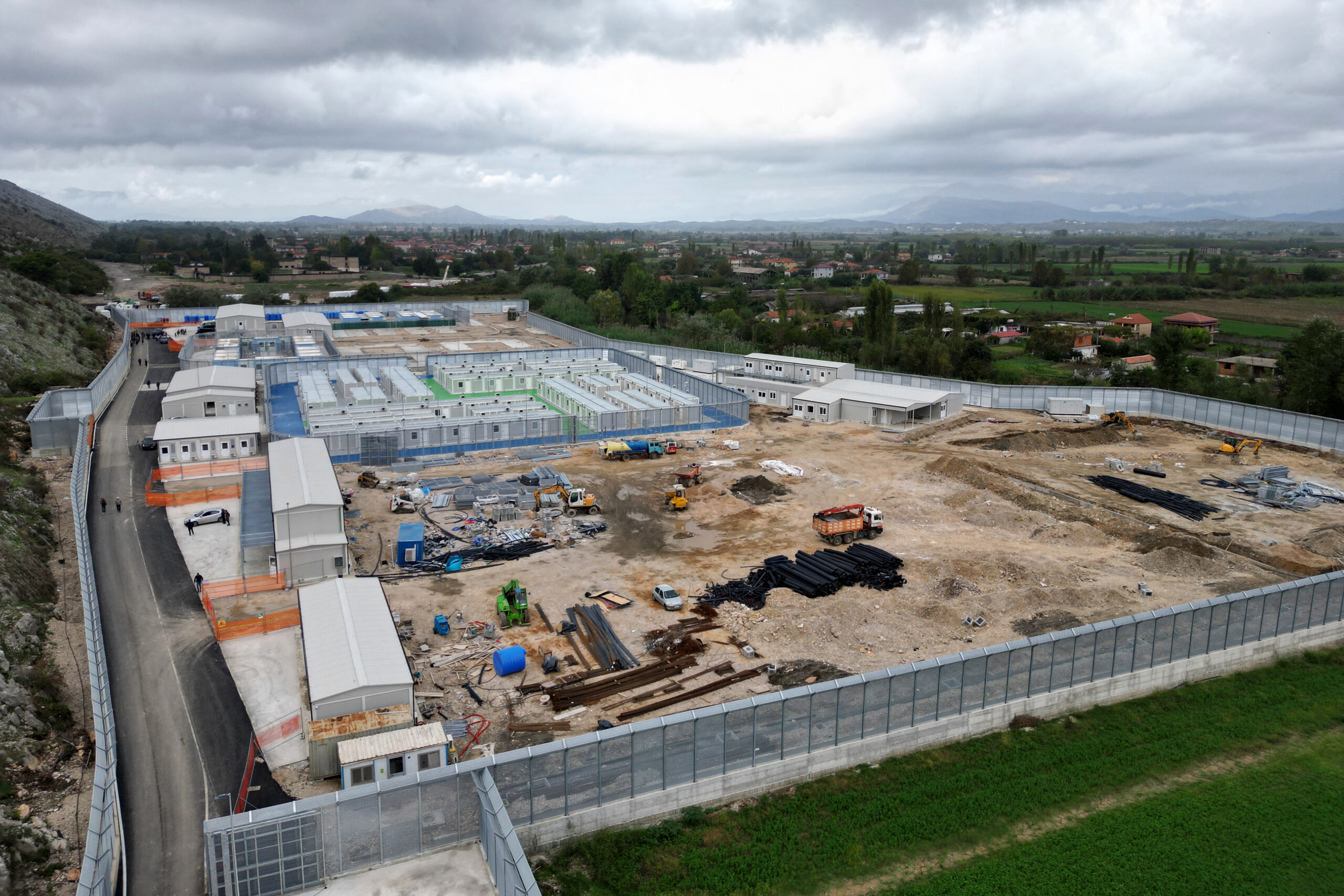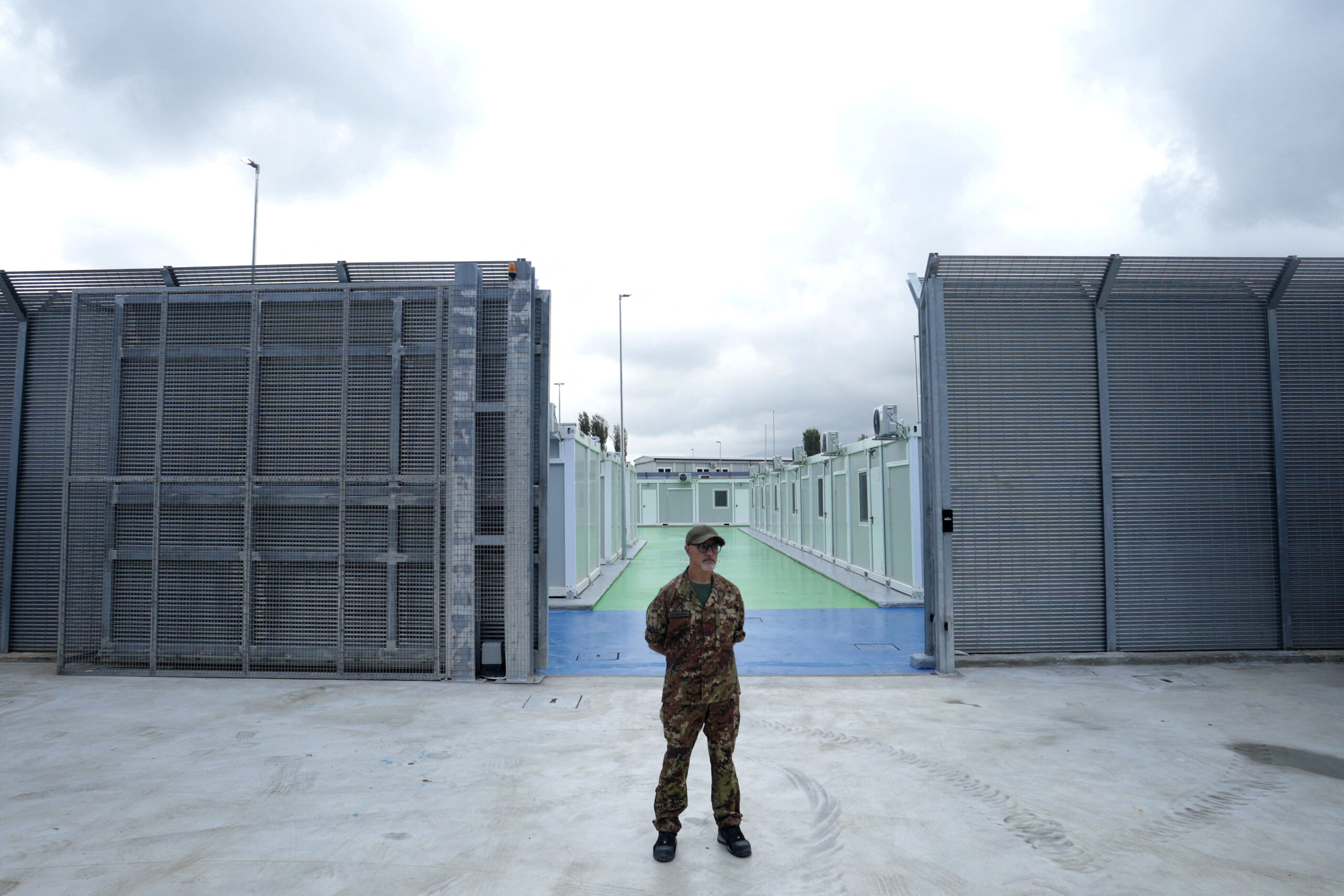Brussels – “In principle,” the conversion of the failed Italian migrant centres in Albania into detention centres for repatriation “complies with EU law.” The assist to the Meloni government comes directly from the European Commission, which explains, “According to our information, Italian national law would apply in these centres.” The conditional is a must because, for the past year, everything revolving around the controversial nearly one billion euro project strongly backed by the premier is shrouded in uncertainty.
Inevitable, given the unfamiliar legal terrain on which Brussels and Rome are moving in parallel in their attempts to combat irregular migration. The former opens to the possibility for member states to enter into bilateral agreements with third countries to detain on their territory migrant persons awaiting repatriation to their countries of origin; the latter readjusts with a decree law the intended use of Albanian centres originally designed for the accelerated procedures of migrant persons intercepted at sea and blocked repeatedly by Italian judges.

A misunderstanding arises here. Because the EU Commissioner for Home Affairs himself, Magnus Brunner, in presenting the proposal by Brussels on return hubs, had made it clear that such centres would not comply with European law at least until the end of the legislative process, which goes through the European Parliament and the member states and which, on such a sensitive dossier, could last several months if not years. Moreover, the European Commission’s proposal is decidedly generic and delegates to agreements between countries “the specifics of the return hub model.” The conditions of stay, the maximum length of detention, and possible scenarios at the end of detention.
The ploy that had made possible, according to Brussels, the plan to outsource asylum procedures to Albania is that in the Shengjin and Gjader centres, Italian jurisdiction would be applied. In essence, the validity of the Italy-Albania Protocol is based on this legal construction whereby the centres are not technically on Albanian territory but on an extension of Italian territory where border procedures can be conducted.

The Italian centre at the Port of Shengjin, northwest of Tirana, 11-10-2024 (Photo by Adnan Beci / AFP)
This legal fiction was confirmed with the transformation to CPR. Conversely, it would be necessary to reopen the Protocol and hear what Edi Rama thinks about it. That is why today (March 31), Markus Lammert, spokesman for the European Commission for Home Affairs, was able to explain, “What is not possible to implement is the concept of return hubs, and Italy is now making use of national legislation.” In this sense, the Gjader centre (the only one for which conversion to CPR is planned) is nothing more than an Italian detention centre for repatriation, in the same way as the ten others in Italy.
This does not automatically mean that everything will go smoothly for Meloni. For example, if Italy successfully transfers migrants who have already been ordered to be returned to such centres, it cannot repatriate them through an airport in Albania because that would constitute an illegal transfer under European law. It would have to bring them back to Italy first, with the associated costs and timelines. At the European Commission’s OK, the Italian right immediately cheered. From the European Parliament in Strasbourg, Carlo Fidanza (FdI-ECR) said that Brussels “confirms the goodness of the Meloni model and the legitimacy of the Albania model, waiting to have the definition of a European list of safe countries to carry out repatriations without having more surprises from a part of the politicized judiciary that has prevented us so far from going all the way.”
In fact, the government has not given up on making the Albanian centres operational for their original purpose, to divert migrants intercepted in international waters and likely to be subjected to expedited procedures directly to Albania. Simplifying, Meloni and Piantedosi’s idea was to take to Albania migrants from countries deemed safe (by Italy), who would then be easily refused asylum. But Italian courts, relying on an Oct. 4 ruling by the EU Court of Justice, found that the countries of origin of the migrants in question could not be considered safe. In yet another wink to Meloni and the European right, von der Leyen promised that the EU would draw up a common list of safe countries, thus breaking the deadlock on the Albania model.
Until then, Gjader may be (unfortunately, given the repeated testimonials of human rights violations, not least by the Council of Europe) another Gradisca d’Isonzo, another Palazzo san Gervasio in Potenza, a Via Corelli in Milan or Ponte Galeria in Rome.
English version by the Translation Service of Withub










